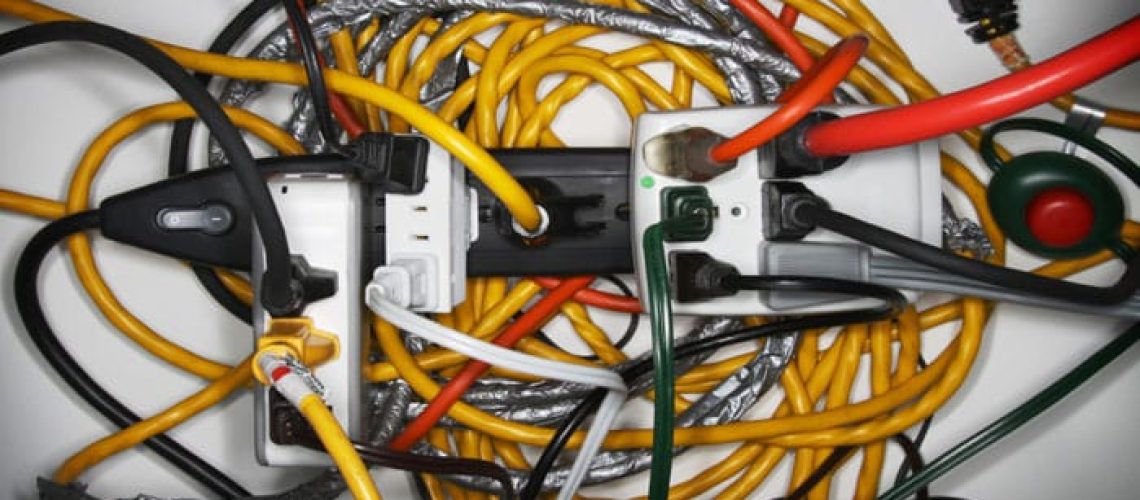When it comes to the safety and functionality of a home, the electrical system is a cornerstone. Homebuyers often focus on aesthetics and layout, but it’s the hidden electrical infrastructure that ensures a secure and efficient living environment. Home inspectors, armed with expertise and a keen eye, play a vital role in uncovering potential electrical hazards that may lurk behind the walls. In this comprehensive guide, we’ll explore the most common electrical hazards that home inspectors frequently discover, shedding light on the importance of addressing these issues for a safe and reliable home.
1. Outdated Wiring
Issue: Knob-and-Tube, Aluminum Wiring, and Cloth-Insulated Wiring
One of the most prevalent electrical hazards found by home inspectors is outdated wiring. Knob-and-tube wiring, common in homes built before the 1950s, lacks the safety features of modern wiring and can pose fire risks. Aluminum wiring, popular in the 1960s and 1970s, is prone to oxidation, leading to overheating and potential fire hazards. Cloth-insulated wiring, often found in older homes, can deteriorate over time, exposing wires and increasing the risk of electrical fires.
Why It Matters:
Outdated wiring can result in electrical fires, shocks, and an increased risk of electrical failures. Upgrading to modern wiring standards is essential for the safety of the home’s occupants.
2. Overloaded Circuits
Issue: Too Many Appliances on a Single Circuit
Overloaded circuits are a common electrical hazard that home inspectors frequently identify. Plugging too many appliances into a single circuit can lead to overheating and an increased risk of electrical fires. This is particularly common in older homes where the demand for electrical power has increased over the years.
Why It Matters:
Overloaded circuits can cause electrical fires, damage appliances, and pose a risk of electrocution. Distributing the load across multiple circuits or upgrading the electrical panel may be necessary to mitigate this hazard.
3. Faulty Outlets and Switches
Issue: Loose Outlets, Worn Switches, and Malfunctioning Components
Home inspectors often discover faulty outlets and switches during inspections. Loose outlets can expose live wires, creating a shock hazard. Worn switches may not function correctly, leading to sparks or electrical failures. Malfunctioning components can pose risks both to the electrical system and the connected appliances.
Why It Matters:
Faulty outlets and switches can result in electrical shocks, fires, and damage to connected devices. Replacing worn or malfunctioning components is crucial for maintaining a safe electrical system.
4. Electrical Panel Issues
Issue: Outdated Panels, Double Tapping, and Over-Fusing
The electrical panel is the heart of a home’s electrical system, and issues with it can be serious safety hazards. Outdated panels, such as those with Federal Pacific Electric (FPE) or Zinsco breakers, may not provide adequate protection against electrical faults. Double tapping, where two wires are connected to a single circuit breaker, can lead to overheating and potential fire hazards. Over-fusing, using a higher amperage fuse than the wiring can handle, can result in electrical fires.
Why It Matters:
Issues with the electrical panel can lead to electrical fires, power outages, and damage to connected appliances. Upgrading to a modern, properly functioning panel is essential for the safety of the electrical system.
5. Inadequate Grounding
Issue: Lack of Grounding or Improperly Grounded Outlets
Proper grounding is a fundamental aspect of electrical safety. Home inspectors frequently uncover homes with inadequate grounding or improperly grounded outlets. Lack of grounding can increase the risk of electrical shocks and damage to appliances, particularly in the event of a power surge.
Why It Matters:
Inadequate grounding can result in electrical shocks, damage to sensitive electronics, and an increased risk of electrical fires. Ensuring proper grounding is essential for the overall safety and functionality of the electrical system.
6. DIY Wiring Projects
Issue: Improperly Installed Wiring, DIY Repairs, and Unpermitted Additions
Do-it-yourself (DIY) electrical work is a common culprit behind electrical hazards. Home inspectors frequently encounter improperly installed wiring, DIY repairs, and unpermitted additions to the electrical system. These amateur endeavors often lack the safety measures and adherence to electrical codes that professional installations possess.
Why It Matters:
DIY electrical work can result in electrical fires, shocks, and damage to appliances. Ensuring that all electrical work is performed by qualified professionals is crucial for the safety and compliance of the electrical system.
7. Excessive Use of Extension Cords
Issue: Overreliance on Extension Cords and Power Strips
Home inspectors often identify homes with an excessive reliance on extension cords and power strips. While these devices can provide additional outlets, using them extensively can lead to overloaded circuits and an increased risk of electrical fires.
Why It Matters:
Excessive use of extension cords and power strips can pose fire hazards and increase the risk of electrical failures. Installing additional outlets or circuits may be necessary to mitigate this hazard.
8. Exposed Wiring
Issue: Exposed Wires, Open Junction Boxes, and Unprotected Cables
Exposed wiring is a safety hazard that home inspectors frequently discover. Whether due to poor installation, damage, or renovations, exposed wires, open junction boxes, and unprotected cables can create an increased risk of electrical shocks and fires.
Why It Matters:
Exposed wiring poses a direct risk of electrical shocks and increases the likelihood of damage to the electrical system. Properly securing and protecting all wiring is essential for the safety of the home.
9. Inadequate Outdoor Wiring
Issue: Lack of GFCI Outlets, Unprotected Wiring, and Poorly Maintained Outdoor Fixtures
Outdoor areas require special attention to electrical safety. Home inspectors often find homes with a lack of Ground Fault Circuit Interrupter (GFCI) outlets, unprotected outdoor wiring, and poorly maintained fixtures. These issues can result in electrical shocks, damage to appliances, and an increased risk of outdoor electrical fires.
Why It Matters:
Inadequate outdoor wiring can pose safety risks to occupants and increase the likelihood of electrical fires. Ensuring proper installation, maintenance, and protection of outdoor electrical components is crucial.
10. Inconsistent Wiring Standards
Issue: Mixed Wiring Types, Unorganized Wiring, and Poor Documentation
Inconsistent wiring standards, such as mixing different types of wiring or having unorganized and undocumented wiring, can be challenging for both homeowners and home inspectors. This lack of uniformity can lead to confusion during renovations or repairs and may result in safety hazards.
Why It Matters:
Inconsistent wiring can lead to errors during maintenance or upgrades, potentially causing electrical failures or hazards. Establishing a standardized and well-documented wiring system is essential for the safety and efficiency of the electrical system.
Conclusion
Home inspectors play a crucial role in identifying electrical hazards that may compromise the safety of a home. From outdated wiring to overloaded circuits and DIY electrical work, these hazards, if left unaddressed, can lead to electrical failures, shocks, and even fires. Homeowners and potential buyers
should take these findings seriously, as addressing electrical hazards promptly is not only crucial for the safety of the occupants but also for the overall functionality and longevity of the home’s electrical system. In the realm of homeownership, electrical safety is non-negotiable, and a proactive approach to addressing these common hazards ensures a home that is not only aesthetically pleasing but also a secure haven for its residents.
To learn more about the most common safety issues discovered by home inspectors, check out our article “Safeguarding Homes: Common Safety Issues Uncovered by Home Inspectors“.


